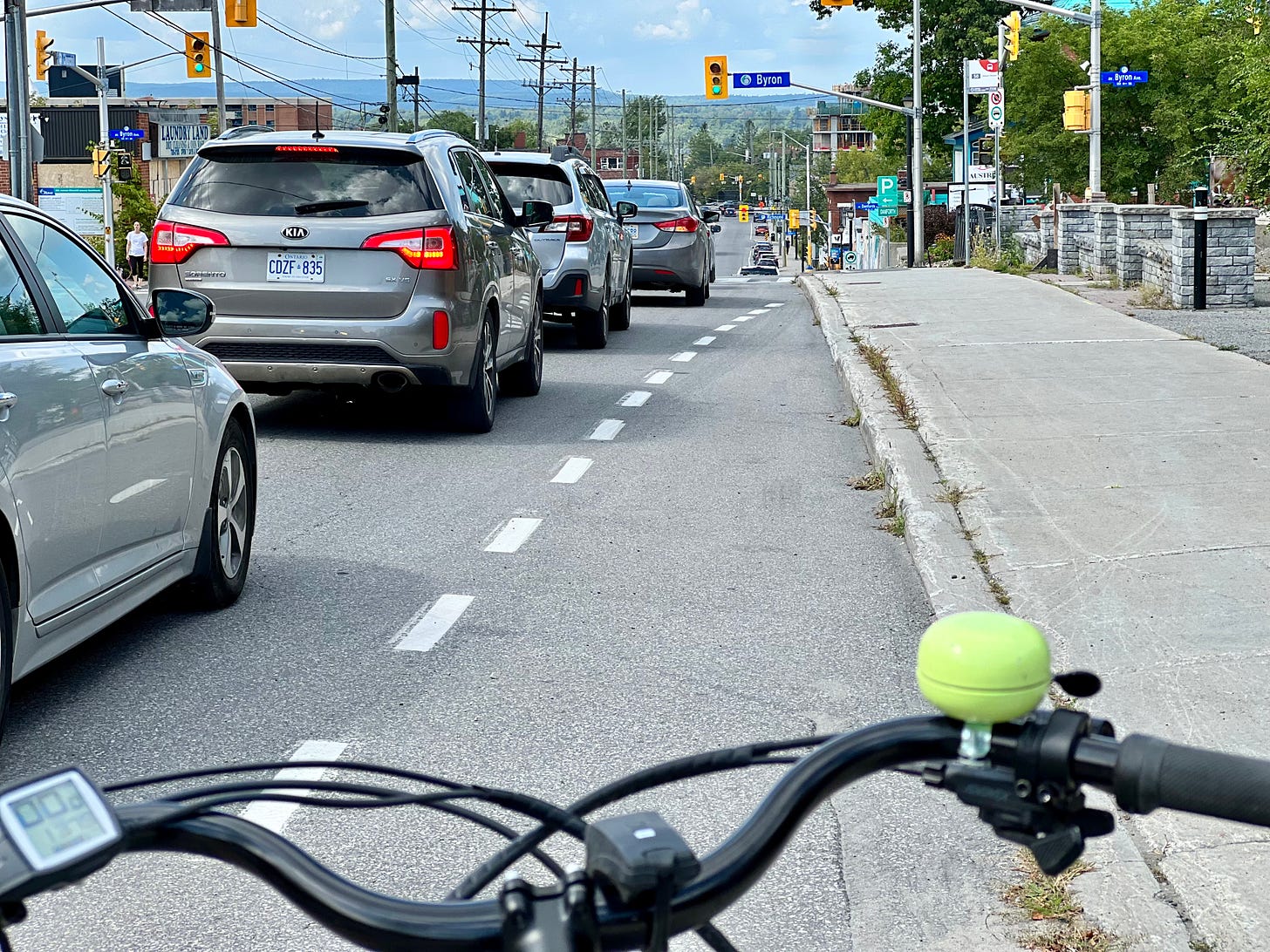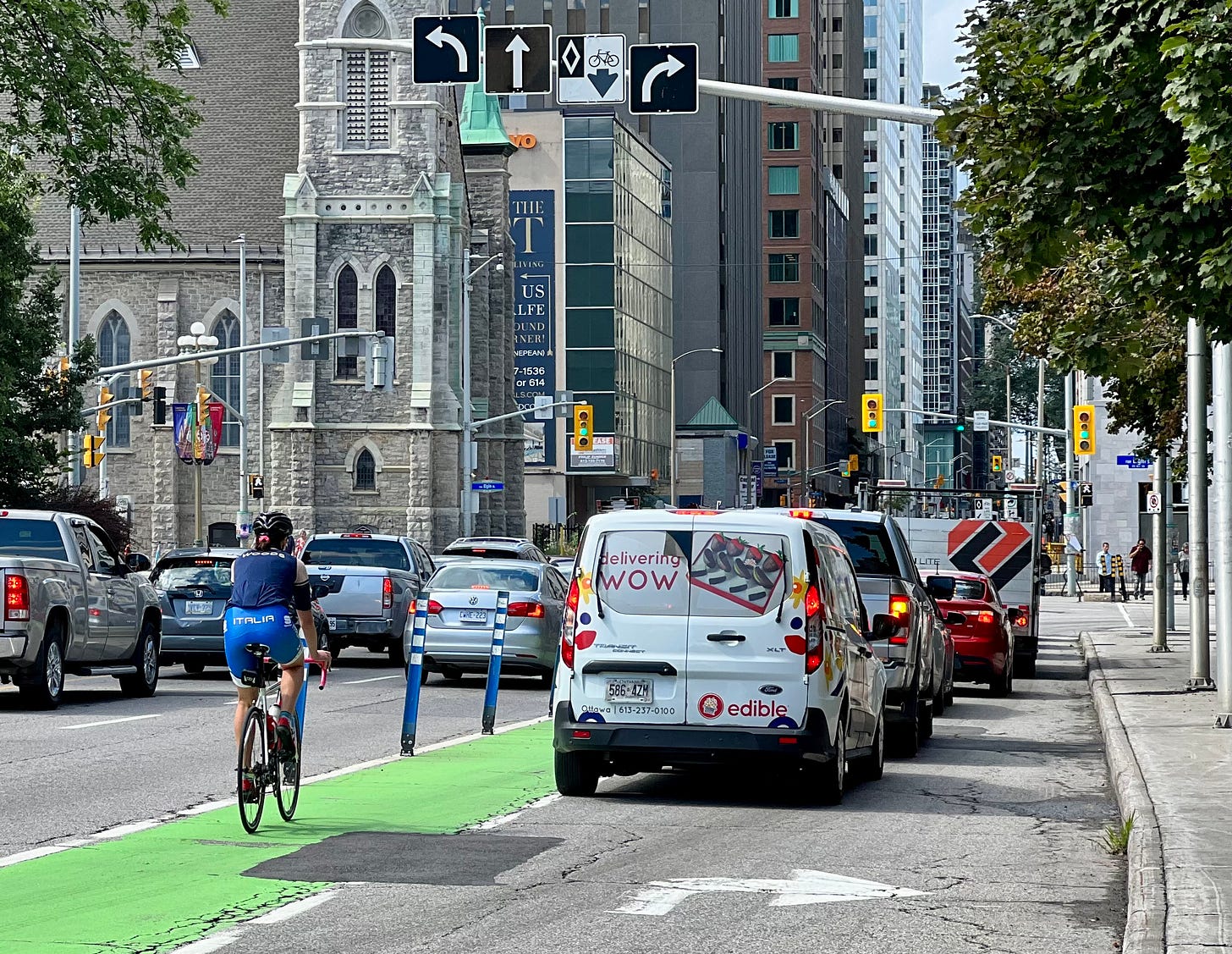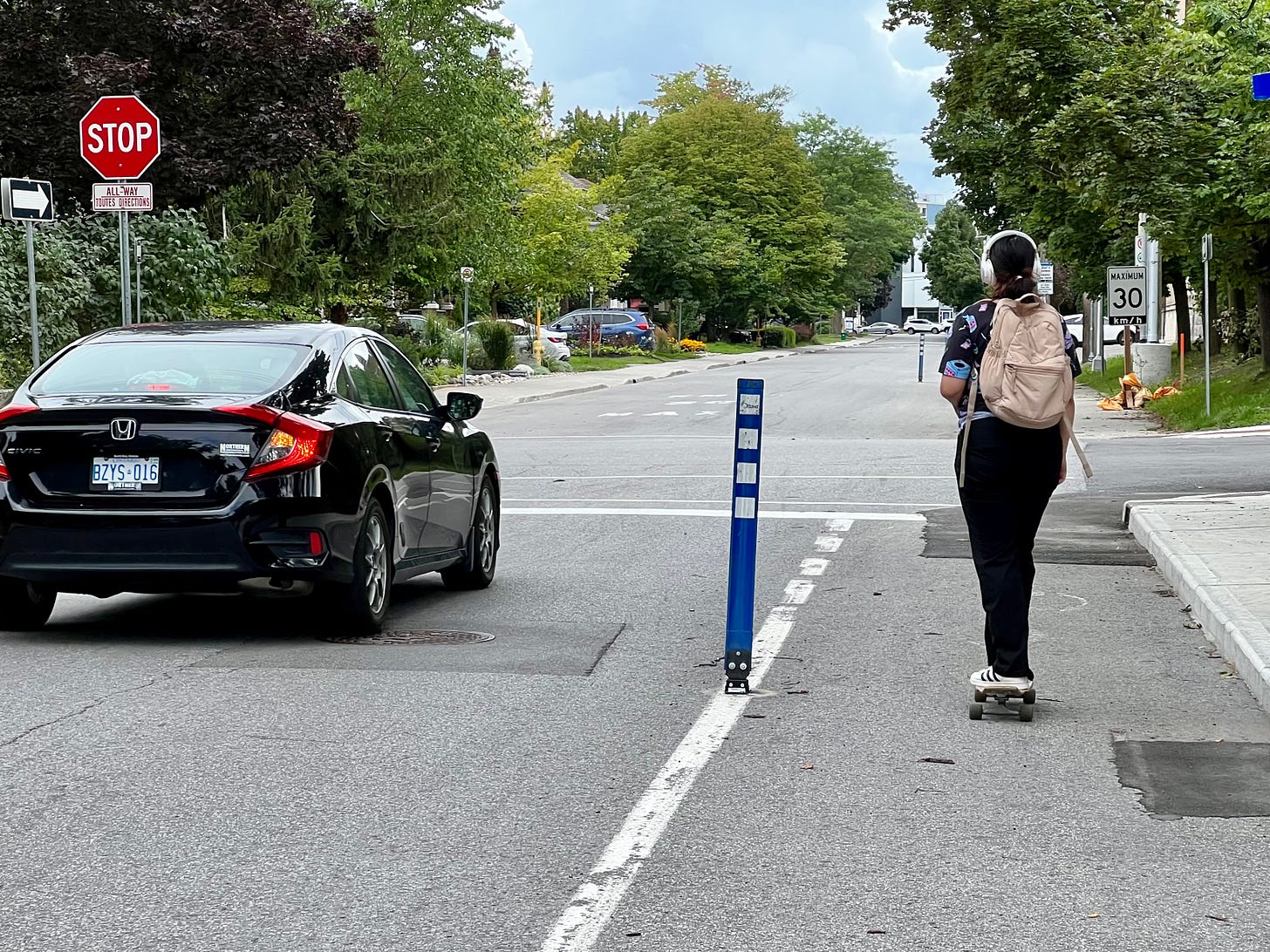Fix Biking 3: Stop Making these 5 Mistakes with Bike Projects
We can learn from the history of bike infrastructure to avoid repeating its mistakes
This is the third in a series of common sense solutions for building a better city for biking.
A well designed bike lane is a thing of beauty. A badly designed one might end up as a missed opportunity to get more people on bikes and out of cars. Or worse - make the roadway more dangerous for users.
In Fix Biking 2, we talked about the 5 principles of bike network design: connected, direct, safe, comfortable and attractive.
While these principles help us evaluate what is right or wrong about a specific project, let’s make it even easier and point out 5 bike design choices that cities need to stop making.
1. Bike Lanes that Suddenly End
This is the worst. You're safe in a bike lane, when suddenly it disappears and you’re fighting traffic.
Bike infra needs to connect to other bike infra for people to use it. If your city is building out the network piece by piece, then at least inform bike users of the nearest safe infrastructure, so they can make travel route decisions accordingly.
2. Bike Lanes Between Parked Cars and Traffic
If there are parked cars next to a bike lane, use those cars to protect the people on bikes. (And keep a buffer to prevent doors opening into the bike lane).
There is a better way.
TRAFFIC - PARKING - BIKE LANE - SIDEWALK.
That’s the order to keep vulnerable users safe.
3. Slips Lanes for Right-Turning Cars
You’re in a bike lane next to the curb. As you’re approaching an intersection, the bike lane turns to dotted lines, moving you closer to the middle of the road and allowing cars to cross the bike lane into a right-turn lane. Like in the photo below.
Cities have to stop doing this – creating slip lanes for drivers turning right, and leaving the cyclists floating in a narrow strip between two lanes of traffic.
Instead of allowing slip lanes, keep the bike lane next to the curb. Have right turning drivers cross the bike lane with more of a 90 degree turn right at a safe protected intersection. This ensures better visibility of those on bikes for drivers who also deserve to be able to make turns without the risk of hurting another road user.
The City of Ottawa has an outstanding guide for building protected intersections that keep bikes and pedestrians safe.
4. Paint Only
The tough part in establishing bike lanes is securing the physical space on the road. But once they’ve secured the space, too many cities simply paint a line on the road and declare victory for cyclists. This allows cars to enter into the bike lane, and make it more dangerous.
Physical barriers turn that space into something protected, and which people of all ages and abilities will feel comfortable using. If money is the problem, there are lots of temporary low cost solutions, such as Qwick Kerbs. Even adding flex posts is better than just using paint, particularly to prevent drivers from viewing the bike lane as a parking zone.
5. The Same Protection Regardless of Road Speed
Thanks to reader byketown for comments on Fix Biking 2, for pointing out a flaw that so many cities continue to make — using the same bike infrastructure for roads regardless of the speed of car traffic.
Here is what byketown writes:
choosing the type of bicycle infrastructure by road speed limit that Mikael Colville-Andersen from Copenhagenize outlines in his book by the same name.
< 20 km/h - cars and bikes can safely share space
20- 40 km/h - painted bike lane is often sufficient, but maybe add markers
40 - 60 km/h - physically protected bike lane on road surface
> 60 km/h - completely separate bike path on different level.
Spot on! (And thanks for the input).
What These Design Flaws Have in Common
These design flaws come about for a simple reason: a traffic network that prioritizes cars, and mostly accommodates bike infrastructure only when there is excess space.
This is a bigger issue. Is your city building a transportation system that looks forward, and prioritizes sustainable travel? Or is it looking in the rear view mirror, unwilling to challenge the primacy of the car?
A good way to answer this question is to look at the bike infrastructure that’s getting approved. If your city is still building with these flaws, chances are your leaders are looking backwards.











